
SLOT MACHINE BASICS
You are reading this guide because you want to learn how slot machines work, what goes into developing games that are fun for players, how to get the playing experience that’s best for you, and determining the best slot machine strategy. You’ve come to the right place, because my more than 30 years as a player and more than 20 years as a gaming writer in books, newspapers and magazines, and as a teacher and speaker at seminars, have led me to explore the games, their history, their design and programming, and the odds of winning.
![]()
Slot machine growth is a worldwide phenomenon, and in many locations they surpass the popularity of all table games combined. There are several reasons:
- Slots are easy to play.
- Minimum bets are affordable
- There’s a chance to win big for a small wager
- Modern slots and online slots are fun and entertaining to play
The objective of this chapter is to introduce you to slot machines’ place in modern casinos, why they’re so popular, and some of the tools that go into making them exciting for players.
![]()
THE RISE OF SLOT MACHINES
Born of a San Francisco mechanic’s tinkering in the late 1800s, slot machines have gone through a multitude of phases and incarnations.
Among slot machines’ phases are:
- They’ve been used as business builders on shopkeepers’ counters, sometimes dispensing sticks of chewing gum or golf balls instead of cash.
- They’ve been relatively inexpensive entertainment for spouses or significant others to amuse themselves in casinos while their partners were doing the real gambling at the tables.
- They’ve been mechanical, clockwork devices.
- They now are high-tech marvels combining animation, film clips, Surround Sound and motion chairs for special effects.
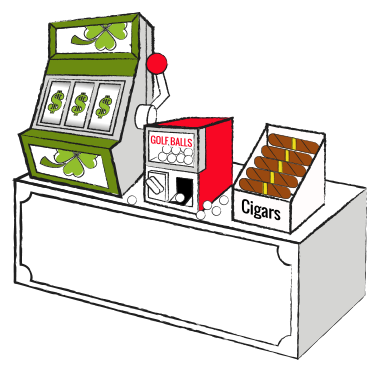
What slot machines are today is a worldwide phenomenon, from their U.S. point of origin to Europe to Australia and the Pacific Rim.
- In the United States, where more than a million slots populate casino floors, they are a major profit center, long since having surpassed table games.
- More than 70 percent of casino revenue in the U.S. comes from the slots, and in some state jurisdictions, that tops 80 percent and even approaches 90 percent.
- In Australia, there are even more slots per capita than in the U.S.
- Slots make up a lesser share of the business but are still important in the huge casino market of Macau.
- Tens of millions of people play slot games online, whether for money at Internet casinos, where legal, or for entertainment through social media apps.
TYPICAL HOUSE EDGE
That’s happened even though slot machines by and large pay less than other casino games. It’s possible for blackjack card counters to gain a mathematical edge on the game and basic strategy players can get the house edge down to half a percent or so. Craps players face a 1.41 percent edge on the pass line, and can get that down to less than 1 percent with free odds.
Roulette players face a house edge of 5.26 percent on double-zero wheels, and 2.7 percent on wheels that have just one zero. On the slots, we speak of payback percentages. Those vary by nation and jurisdiction, but in the United States, where slot revenues are public record in most states. This writer published an article here talking about payout percentages and how to maximize your slot payouts.
Typical payback percentages are:
Translated to house edges, that’s 13-to-16 percent at the 1-cent denomination, 10-to-12 percent on 5-cent games, 7-to-10 percent on quarter games and 5-to-8 percent on dollar machines. That means penny slot player might be spotting the house $16 per $100 wagered, while a basic strategy player spots the house only 50 cents per $100.
SO WHY PLAY SLOTS?
On a percentage basis, slots (and online slots) can’t compare to table games, but there are many reasons players choose the slots:
SLOTS ARE EASY.
There’s virtually no learning curve in playing a slot machine. At the most basic, you slide currency into a bill validator to buy credits, you push a button or pull a handle to start reels spinning, and you wait to see what symbols land on paylines. There are no strategies to learn, and no one to criticize you if you make a mistake, as sometimes happens at blackjack tables.
SLOTS HAVE LOW MINIMUM WAGERS
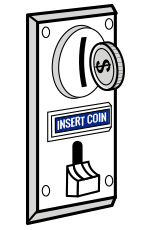
It’s rare that you’ll find minimum wagers of less than $5 a hand in Las Vegas casinos, and even $5 tables can be scarce. At busy times at premium properties, you might be looking at minimum bets of $25 and up. Slot machines offer the low rollers a chance to play for much less. For example, some 1-cent video slots have 30 paylines, meaning lines across the video reels on which you’re paid if matching symbols line up. If you bet 1 cent on each payline, then your wager is 30 cents per spin of the reels, far, far less than any table minimum you’ll find in a casino.
It’s possible to bet more – the same machine might allow bets up to 10 credits per payline, or a $3 maximum bet. But with minimum bets, slots can be inexpensive entertainment. There are tradeoffs not only in the higher house edge on the slots, but in the speed of the game. At a full seven-player blackjack table, you might make 50 to 60 wagers per hour, and if you’re playing one-on-one against the dealer, you might get that up to 200 wagers per hour. On slot machines, it’s possible to make upward of 500 bets per hour, even 800 on games where bonus events doing bring frequent pauses in wagering.
SLOTS OFFER BIG JACKPOT CHANCES
The allure of big money is a strong attraction, and big money is possible on the slots. It’s possible to win thousands of dollars, even millions on some games, with one lightning strikes lucky spin. The largest slot jackpot in history, $39.7 million, came on a $3 bet on a $1 denomination International Game Technology Megabucks machine at the Excalibur casino in Las Vegas in 2003. Such large jackpots are extraordinarily rare events, but any dedicated slot player occasionally collects winnings of hundreds of times the size of the bet. It might not be millions, but a $300 win for a 30-cent bet is the kind of thrill that keeps slot players coming back.
SLOTS ARE FUN
The advent of computerized video slots (or online slots) has set game designers’ imaginations free, and slotmakers spend tremendous amounts of time and money developing interactive, entertaining slots games that will give you a good time even when you’re not winning. Whether you’re taking control of a video racecar to try to get to the head of the pack for extra rewards in NASCAR, picking gift boxes at party time to collect rewards in the longtime player favorite Jackpot Party, or having your picture taken and actually becoming part of the game as a reel symbol in TMZ, you’re taking an active role. If you want a game where you just sit back and watch the reels spin, they’re still around. But more and more, the emphasis on games that are fun as well as a chance to win.
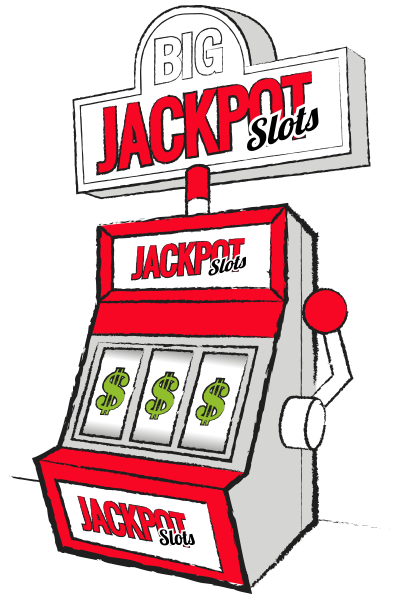

- Slot machines have higher house edges than table games, but are extremely popular.
- Players are attracted by slots as easy games to play, with low minimum wagers, chances at big jackpots and for their entertainment value.
- One goal of slot designers is to make players active participants so they have a good time even when they’re not winning.
- The slots have a language and terminology of their own, whether you’re looking at mechanical reels through a game’s window or looking at representations of reels on a video screen.

SLOT MACHINE INVENTION AND HISTORY
Slot machines are such mainstays of modern casinos and slot games so widely played online today that you might think it’s always been so. But everything has its beginnings, and slots have evolved over the last 120 years.
- The first three-reel slot machine had a maximum jackpot of half an American dollar.
- Many early slot machines did not pay off in cash.
- Computerized slots with random number generators enabled more volatility and bigger payoffs.
- International gamemakers have had tremendous influence in shaping today’s slots.
Modern slot machines are computerized devices that use all the tools technology offers. It seems the only limit on game design is the designer’s imagination. However, slots were invented long before computers, and the first slots were mechanical, clockwork machines.
CHARLES FEY AND THE LIBERTY BELL
There were coin-operated gaming devices before San Francisco mechanic Charles Fey invented the Liberty Bell in 1895, but it’s with the Liberty Bell that the line that leads to modern slots begins. Fey devised a game with three spinning reels, a handle on the side, and a slot in which to drop coin.
Among the game’s features were:
- Five different symbols were used on the reels – horseshoes, diamonds, spades, hearts and a Liberty Bell.
- There was a single payline across the middle of the display.
- The top payoff came for lining up three Liberty Bells.
- The top jackpot was tiny by today’s standards – 10 nickels, or U.S. five-cent pieces, meaning a total jackpot of half a dollar.
The design was simple, elegant, and long-lasting. You can still find three-reel games in today’s casinos, though they’re driven electronically rather than by handle-initiated cogs and gears. If you placed the Liberty Bell in today’s casinos, it would immediately be recognizable as a slot machine.
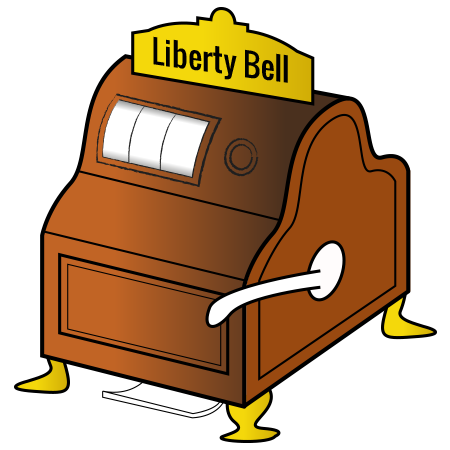
EARLIER GAMES
While the Liberty Bell was the first reel-spinning game, there were earlier wagering machines with coin slots. Sittman and Pitt of Brooklyn, New York, produced a poker-based machine in 1891. It had five drums, each with 10 card faces. Each play would display a five-card poker hand. Also popular were color wheel games. These had vertical wheels divided into segments of different colors. Players would wager on which color would line up with a top indicator. These machines would quickly fade from the scene, while Fey’s invention spurred other gamemakers to design three-reel games.
HERBERT MILLS
A Chicago manufacturer, Herbert Mills, introduced a three-reel slot machine called the Operator Bell in 1907. Mills was a leader in coin-operated devices, which included:
- A movie-viewing machine called the Autosteroscope.
- An ice cream making vending machine.
- Machines for dispensing Coca-Cola, both in bottles and cups.
Mills machines were the most widespread early slots, and it was Mills who first put fruit symbols on the games. The fruit symbols have been so durable that in some nations, including the United Kingdom, slot games are referred to as “fruit machines.”
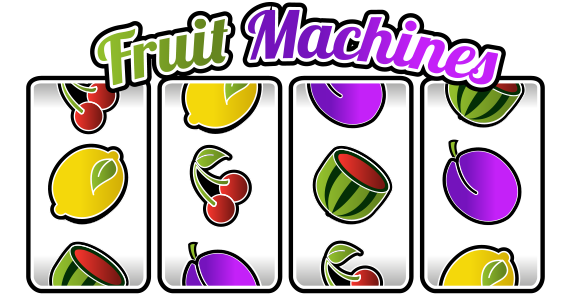
TRADE STIMULATORS
Until the State of Nevada legalized casino gambling in 1931, slot machines that paid money were illegal in the United States. That didn’t mean such machines didn’t exist. But monetary payoffs couldn’t always be in plain sight.
- Instead of being casino games, some machines were used as trade stimulators, placed on merchants’ counters to attract customers and help build business.
- Trade stimulator slots paid off in merchandise, rather than in money. Among the prizes were golf balls and cigars.
- Some popular games paid in sticks of chewing gum, notably Bell Fruit Gum. The trademark logo of the gum company was a black rectangular bar, and that inspired the “bar” symbols you still see on modern slots.
- Gum flavors also inspired fruit symbols including cherries and watermelons, also still commonly in use. At some locations, players knew they could win something more, with merchandise prizes secretly exchanged for cash winnings. But at least in the open, the games were designed to pay in legal prizes.
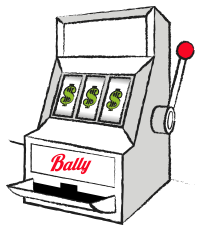
RISE OF BALLY
Another Chicago company was founded in 1932 as Lion Manufacturing.
One of its early successes was a pinball game known as the BallyHoo, and the company name was changed to Bally Manufacturing. In later years, it changed to Bally Technologies, moved its offices to Las Vegas, and today is part of Scientific Games. Several years after the legalization of gambling in Nevada, Bally positioned itself to challenge Mills for the slot machine leadership. Its first real slot was of the trade stimulator variety. The Bally Baby was a tiny countertop model that dispensed award cards to be exchanged for chewing gum.
EARLY INNOVATIONS
Bally was an innovator, the leader in casino slots for decades. Among Bally’s innovations were:
- The Bally Bell, which was the first slot machine to accept more than one coin denominations, with one slot for U.S. five-cent pieces (nickels) and one for 25-cent pieces (quarters).
- The popular Hi Boy upright slot in the early 1940s, which established Bally as a major provider of slot games. By the 1960s, more than 80 percent of casino slot games were made by Bally.
- Electromechanical slots, introduced in the 1960s, in which electronic components were added to mechanical workings.
- The coin hopper, introduced along with electromechanical slots on the Money Honey machine. The coin hopper circulated in a pool for payoffs. That enabled bigger payoffs to be made by the machines without having to stop play to have an attendant pay by hand, and those bigger machine pays were a big step in increasing slots’ popularity.
INTERNATIONAL GAME TECHNOLOGY
In the 1970s, a Bally engineer, Si Redd, invented video poker. Bally didn’t want the game, so Redd received permission to take it on his own. He did, founding a company called Sircoma, and when video poker was a hit and the company went public and sold stock, it became International Game Technology. IGT, based in Reno, Nevada, went on to supplant Bally as the world’s largest slotmaker, and in 2014 merged in 2014 with GTECH, the Rome, Italy-based leader in lotteries and other gambling services and technologies.
IGT’s innovations have included:
- Computerized slots with virtual reels and random number generators. Those made it possible to design games with much more variation in odds, enabling huge, lifestyle-changing jackpots.
- Wide-area progressive games. IGT’s Megabucks game was the first to link machines at different casinos to offer multimillion-dollar prizes.
- Popularization of the bonus wheel. A smaller company, Anchor Gaming, devised an add- on to slot machines called Wheel of Gold. IGT knew a good thing when it saw it. It licensed Wheel of Gold, worked out a licensing arrangement with the television game show “Wheel of Fortune,” and the rest is history. Wheel of Fortune slots have been among the most popular games since the mid-1990s.
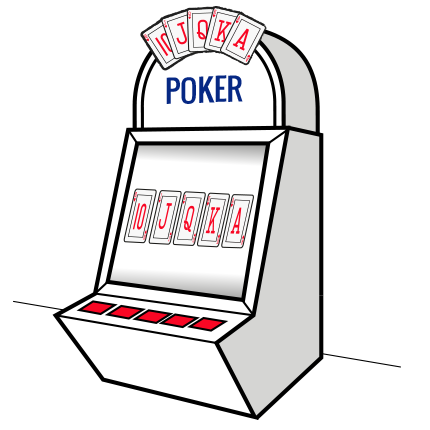
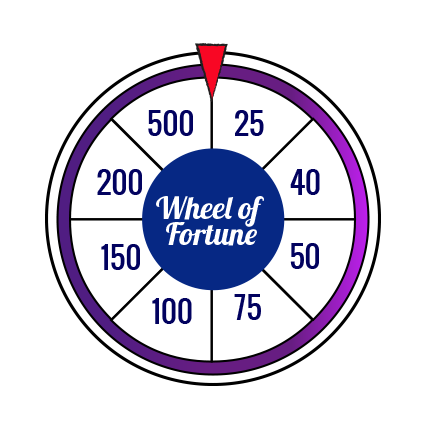
WORLDWIDE FLAVOR
Slots have their roots in the United States, and American slotmakers remain among the worldwide leaders. However, slotmakers with worldwide influence have arisen around the globe. Aristocrat Technologies has had enormous influence, leading the way in the development of games with five-reels (both mechanical and on video), multiple paylines and bonus events in the early 1990s. When then-Chicago-based WMS Gaming, now part of Scientific Games, led the breakthrough of multi-line video bonusing slots in the U.S. in the mid-to-late 1990s, execs acknowledged they were confident the games would resonate with players because Aristocrat’s games had done so well on the Pacific Rim. Among other worldwide gamemakers who have made a big impact in the last couple of decades are Austrian-based Novomatic, Japan’s Konami Gaming and Aruze Gaming, with branches in the U.S., Australia, South Africa and Macau.
VIDEO BREAKTHROUGH
The large majority of slot machines in use today are on video screens instead of using mechanical reels. Early video slots, available in the 1980s, tried to mimic the three-reel experience, and they weren’t at all successful. To attract players, video slots needed to offer a different play experience. In the U.S., the first time slot games with video representations of spinning reels game when Bally introduced the Game Maker in 1994. It included slot, video poker and video blackjack games on the same unit. The slot games even developed a following, rare for the time. Poker and blackjack had carved out followings on a video format, but the Game Maker was the first machine where video slot games achieved a degree of popularity. Bonusing slots from Aristocrat and then WMS followed, and the popularity of video took off. Today, video slots dominate international markets. And even in the United States, which has a longer stronger tradition of mechanical games, video
slots make up more than 80 percent of modern casino slot floors.
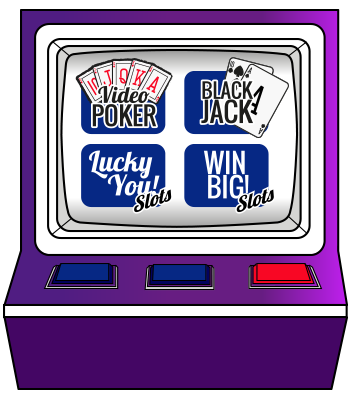

- Slot machines have been on the scene since the late 1800s, with San Francisco mechanic Charles Fey’s Liberty Bell setting the standard as the first reel-spinning game.
- Companies including Herbert Mills and Bally Industries played key roles in the development of slots, with Bally contributing many innovations.
- Early slot machines were used as trade stimulants for merchants, with payoffs in chewing, cigars, golf balls and other times instead of cash.
- International Game Technology’s introduction of virtual reels coupled with random number generators made possible giant jackpots and variety in slot odds.
- Australia’s Aristocrat Technologies use of five-reel slots, video and bonus events paved the way for the slot games we see today from manufacturers around the world.
- Computerized slots with mechanical reels are still used in today’s casinos, but the large majority of modern games use video representations of reels.
IMPORTANT ADVANCES IN SLOT MACHINE TECHNOLOGY
Slot machines are more reliant on technology than any other casino games, and advances have changed the kinds of games that manufacturers can offer.
- The coin hopper enabled bigger payoffs at machines, and ticket printers later replaced coin hoppers.
- The virtual reel enables games with bigger odds and bigger jackpots.
- Bonus wheels and video bonus play give players something extra to hold their interest.
If there’s one invention that could be classified as the most important in slot machine history, it’s Charles Fey’s Liberty Bell machine. But in the intervening 120-plus years, many innovations and inventions have gone into developing the games we play today. Here are some of the most important.
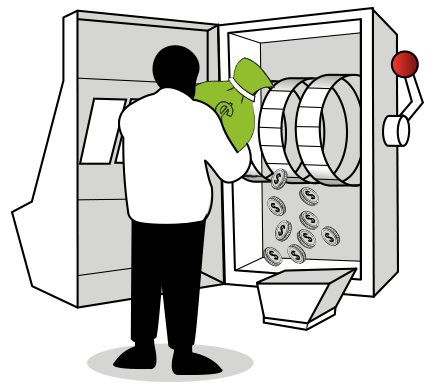
THE COIN HOPPER
When Bally engineers Frank Nicolaus and Bud Breitenstein invented the motor-driven hopper, it revolutionized slot play. Here’s why the hopper was so important:
- Earlier slot machines used coin tubes. They were rigid; coins had to be stacked in them.
- Space inside the machines limited how many coins tubes could hold, and that put severe restrictions on how many coins could be paid out before the tubes had to be refilled.
- The coin hopper, first used on the Money Honey electromechanical slot in 1963, the coin hopper enabled slots to circulate coins for payouts from a large pool.
- The larger pool of coins meant payouts could be bigger, initially up to 500 coins at a time. Later hoppers could circulate more than 1,000 coins.
Nicolaus and Breitenstein’s brainchild enabled gamemakers to design games with larger, more frequent payoffs.
THE VIRTUAL REEL
If slot machine odds were limited by the odds derived from the actual number of symbols on each reel, then jackpots couldn’t be very large. That we can play for jackpots reaching tens of thousands, even millions of dollars today is thanks to Inge Telnaes. In 1984, he developed the method for mapping symbols and spaces – or “stops” – from a physical reel onto a virtual reel.
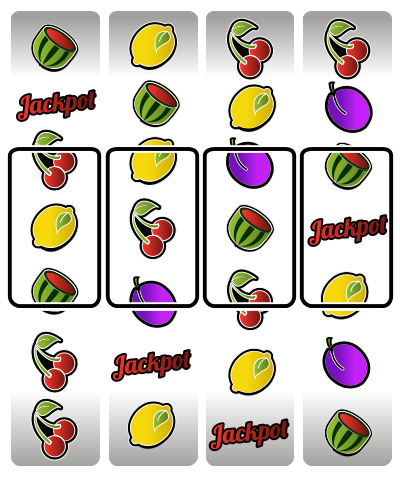
That was a game changer for many reasons:
- Big jackpots require big odds against winning, and increasing odds require increasing the number of possible combinations of symbols and spaces.
- Before the virtual reel, the main solution toward increasing the number of stops on a slot machine reel was to increase the size of the reel.
- Because reels had to fit inside a machine’s casing, gamemakers could go only so far in increasing the number of stops and combinations.
- Telnaes’ virtual reel meant game designers could make the reel behave as if it had any number of symbols and spaces. A reel with one jackpot symbol and two triple bars, for example, could be mapped so the triple bars came up 10 times as often as the jackpot symbol, while still leaving a random game.
- More stops mean more flexibility for game designers to give us games with high volatility, low volatility, big jackpots, frequent jackpots and everything in between. IGT Technology was quick to take advantage, as were other manufacturers who licensed the technology from IGT.
Without it the virtual reel big-money games like International Game Technology’s Megabucks wouldn’t have been possible, nor would even games that we today think of as having moderate jackpots.
LINKED PROGRESSIVE JACKPOTS
Slot machines with progressive jackpots add a portion of each wager to the jackpot amount until somebody wins it. Afterward, the jackpot resets to the starting amount and starts building again.
The first progressives were single-machine jackpots. They were followed by linked progressives, which electronically link multiple games so that a bet on any of the machines raises the jackpot available to all. The extreme version of the linked progressive is the wide-area progressive, and that’s where you’ll find the biggest jackpots. Wide-areas link not only neighboring machines, but machines in different casinos.
The first wide-area progressive game was IGT Megabucks, which launched in 1986, and the Nevada Megabucks link, which links machines throughout the state, including the dozens of casinos in Las Vegas, is the world’s longest-running link. It was on a Megabucks machine that the world-record jackpot of $39 million was won in 2003.
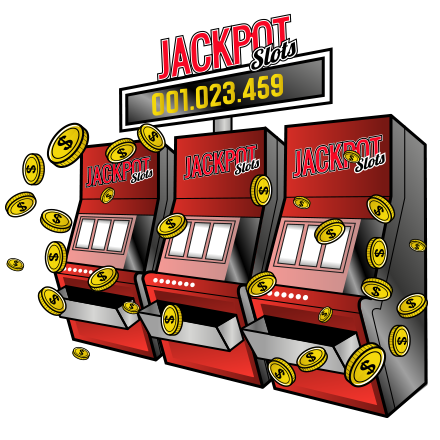
MULTI-TIERED PROGRESIVES
Early progressive slots put the progressive jackpot only on the top-paying combinations. That’s changed in the modern slot world, where any walk through a casino will find dozens of machines with multi-tiered jackpots, with names such as Mini, Minor, Major and Grand. The company that showed us how it’s done is Aristocrat Technologies. The format debuted in Australia, and came to the U.S. in the late 1990s with game called Cash Express and a jackpot system called Hyperlink.
Multitiered progressives share some key features:
- The emphasis is on small, attainable jackpots, keeping the player involved with frequent wins. For example, a bottom tier starting at $10, a second tier starting at $50, a third tier starting at $500 and a top tier at $2,500.
- Some multitiered progressives have even smaller rollover values for more frequent hits, while some have higher rollovers for less frequent but bigger jackpots.
- Nearly all multitiered progressives have large jackpot displays stretching over a bank of several machines. Through the displays, players and passers-by can see that when the bank is full, progressives are being awarded often.
Hyperlink’s success has led to its competitors, including IGT, WMS, Bally and other manufacturers all bringing out their own multilevel progressives. Four-tiered games set the early pace, but multitiered progressives are available with as few as two levels, and also with 10 or more.
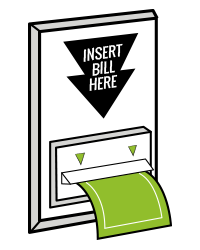
THE BILL VALIDATOR
If you were playing slots before the early 1990s, you remember games where you dropped in coins by hand for every pull. The bill validator changed all that.
No longer does a $20 investment in the slots mean dropping in 80 quarters, one by one. Instead, just slide a $20 bill into a reader to get 80 credits on a meter, and play off the credits.
Today’s bill validators must scan bar-coded payout tickets as well as currency, and must offer increasing flexibility to meet casino demands for rapid recognition of currency and detection of counterfeit money.
Developers of cash handling solutions have devised validators programmable and adaptable to different size notes to read currencies from nations around the world.
TICKET PRINTERS
Before the late 1990s, most slot payoffs came on coins dispensed by the machine. Today, most payoffs come in bar-coded tickets as ticket printers have replaced coin hoppers.
When you cash out, you push a button, a ticket prints out, and you then can either use the ticket to buy credits in another machine or take it to a kiosk or the cashier’s cage to exchange the ticket for cash.
There are players who miss the sights and sounds of coins pouring out of slot machines, clanking and clattering into trays. But there are advantages both for casinos and players in using the tickets:
- Payout by bar-coded ticket made hopper jams and fills a thing of the past. There is no more down time while waiting for an attendant to clear the jam or pour a huge bag of coins into the machine.
- Ticket printers also made possible the introduction of small-denomination slots and games with dozens of paylines. Small coins jam hoppers frequently, and manufacturers weren’t about to introduce multiline 1-cent games until ticket printers were approved by regulators.
- Modern printers also can serve operators as promotional devices, capable of printing coupons or vouchers right at the slot machine.
- Use of printers means casinos don’t have to tie up huge sums of money in keeping coins in stock.
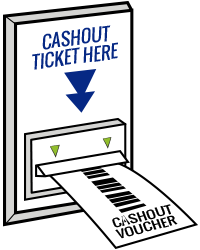
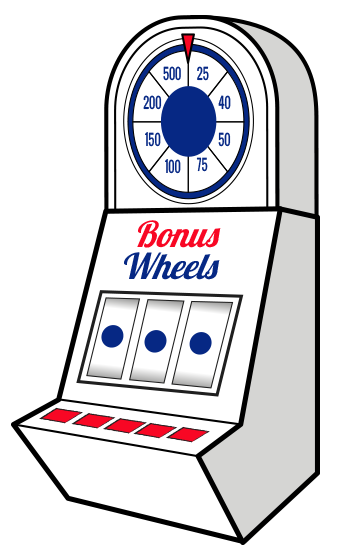
MULTI-GAME MACHINES
Installing multiple games on the same machine and allowing players to choose by touching an on-screen icon is common today, but the format didn’t exist a couple of decades ago. The innovation came from Bally, which introduced the Game Maker in 1994.
The Game Maker included slot, video poker and video blackjack games on the same unit. The slot games even developed a following, rare for the time. Poker and blackjack had carved out followings on a video format, but the Game Maker was the first machine where video slot games really worked. The success of multigame machines such as IGT’s GameKing can thank the Game Maker for blazing the trail.
SLOTS BONUS WHEELS
When Anchor Gaming introduced Wheel of Gold in 1995, it was a sensation. Players had never experienced anything like the bonus wheel that now is a reliable tool in the slot designer’s kit. The original wheel was affixed on a tower atop Bally slant-top slot machines, and was a sensation. When the tone sounded signaling an upcoming spin, everyone in the vicinity stopped to watch, to see where the wheel would stop and how many bonus credits the player would win. IGT’s Wheel of Fortune followed, and today many manufacturers use bonus wheels as extras on their games.
MULTI-LINE VIDEO SLOTS WITH BONUS PLAY
The Pacific Rim was the proving ground for what has become the hottest gaming trend of the last 15 years.
- Australian manufacturer Aristocrat Technologies was having big success overseas with games on video screens with multiple paylines.
- WMS Gaming had the first mega-success in the U.S. in 1997 with Reel ’Em In. There were just five paylines ---- three across the five video lines, a “v” and a chevron. When three matching fishing lure symbols appeared on screen, the video reels faded and were replaced by a scene of fishermen on a lake. Players touched the screen to choose an angler to reel in a fish for bonus credits. Such bonusing, in varied, creative, entertaining forms, is a key to modern slot popularity.
- Today, video slots dominate casino floors. From that five-line, second screen beginning we’ve seen the format grow to 9, 15, 20 even 100 lines, 243 ways-to-win games such as Aristocrat’s Reel Power slots, multi-tiered jackpots, mystery bonuses and community style play. Now that’s an innovation.
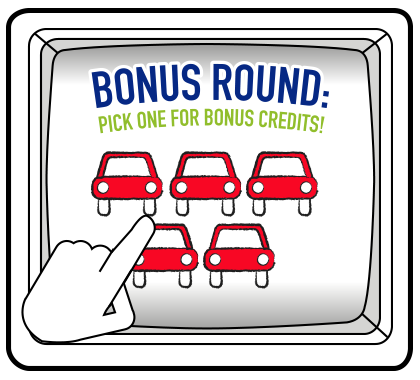

- Advances in technology have changed the slot player’s experience.
- Modern computerized slot games can offer bigger jackpots and more varied play experiences.
- In addition to changes in the games themselves, the use of bill validators to buy credits and ticket printers to cash out credits eased play and enabled the development of low-denomination games.
- Bonus wheels atop slot machines as well as bonus events on video screens added entertainment value to the games.
- The online slots, and free slots are spreaded wide all over the internet and played daily by millions of people.
Written by John Grochowski





